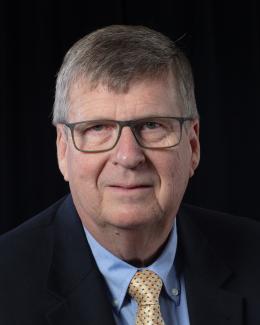
Mike B Farrar
Director, Radioisotope Processing Facility Project
Bio
Mike Farrar began his career at Oak Ridge National Laboratory (ORNL) in 1980 as an operations engineer at the High Flux Isotope Reactor (HFIR) after receiving a B.S, in Mechanical Engineering from Tennessee Technological University. Mr. Farrar certified as a HFIR Senior Reactor Operator and qualified as a HFIR Shift Supervisor in early 1981. In his early career, Mr. Farrar planned and coordinated the frequent HFIR refueling outages, performed shift relief as Shift Supervisor, and provided operations engineering support for maintenance and plant modification work. In 1984, Mr. Farrar became the Assistant Reactor Supervisor for HFIR with increased management responsibility over the operation of the reactor facility. As an ancillary duty, Mr. Farrar established the HFIR Training Group in 1987 and generated a HFIR Training Program plan to comply with ANS-3.1. In 1987, Mr. Farrar initiated and managed a new maintenance organization within the newly formed Research Reactors Division (RRD) to control and document all maintenance activities at all ORNL reactor and critical facilities. This activity required driving a significant culture change as the formal work control and conduct-of-maintenance processes and procedures were established and implemented for the first time. In 1989, Mr. Farrar became the HFIR Operations Manager responsible for the safe and reliable operation of HFIR. At the time, HFIR had been shut down for three years due to vessel embrittlement and management concerns. He resolved all outstanding operations management concerns and oversaw the resumption of reactor operations in early 1990. During his tenure in this position, formal conduct-of-operations procedures and processes were implemented resulting in increased reactor availability. In 1995, Mr. Farrar became HFIR Reactor Upgrades Project Manager responsible for the design, safety analysis, fabrication, and installation of upgraded reactor components to improve the existing neutrons scattering capabilities. This project was coordinated with the scheduled permanent reflector replacement outage which was included in the project scope. The upgrades outage was executed in 2000/2001 resulting in 300% increases in flux-on-target at the HB-1 and HB-3 neutron beam ports; an increased cross-section of the HB-2 neutron beam sufficient to support five major neutron scattering instruments; and a reactor configuration ready to receive the new cold neutron source beam tube being delivered by a separate project. Following the completion of the HFIR upgrades project, Mr. Farrar served as the HFIR Safety Analysis Group manager responsible for maintaining the HFIR safety basis. During this tenure, he managed the development and submittal of the major HFIR SAR update to satisfy requirements of 10 CFR 830, Subpart B. He also spent a short tenure as the RRD Research & Experimental Manager responsible for proving the necessary technical support to users of HFIR capabilities including design, safety analysis, fabrication, installation, removal, and shipment of irradiation materials. In 2004, Mr. Farrar assumed the role as HB-4 Cold Source Project Manager. He took this existing project and applied modern project controls and gained approval to proceed from the DOE-Basic Energy Sciences (BES). The project was completed in 2007 delivering the brightest steady-state cold neutron beam in the world. Upon completion of the cold neutron source project, Mr. Farrar became the Operations Analysis Manager for RRD. In 2009, Mr. Farrar accepted the role as Operations Manager for the Nuclear Operations Directorate. This role shifted a year later when the directorate was expanded to include the ORNL nuclear science divisions and was renamed the Nuclear Science & Engineering Directorate (NSED). In this role, Mr. Farrar assisted the director in strategic and business planning; represented NSED interests to lab level service organizations and management systems; and coordinated directorate-wide operations, processes, and projects. In 2020, NSED was reorganized into two directorates at which time Mr. Farrar accepted the role of Nuclear Infrastructure Program Manager for the Isotope Science and Engineering Directorate (ISED). In this role, Mr. Farrar established and began implementation of a strategy to set the foundational nuclear infrastructure in place for ORNL to meet the challenges to come over the remainder of the century. In 2021, Mr. Farrar accepted the position as Director of the Radioisotope Processing Facility (RPF) project in addition to his current role. As RPF Project Director, Mr. Farrar is establishing and advancing a DOE capital project to design and build a Hazard Category 2 hot cell facility to serve the nation's future demand for radioisotopes.

